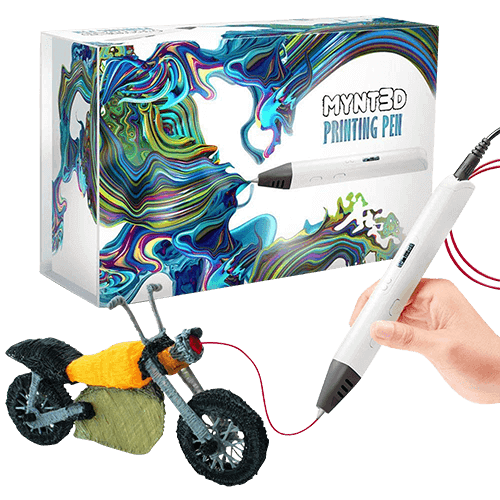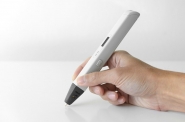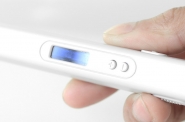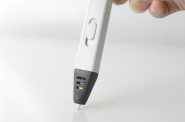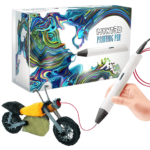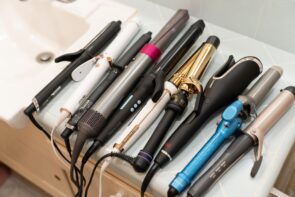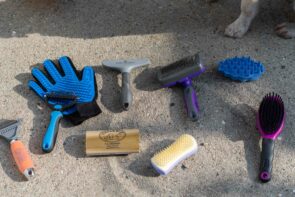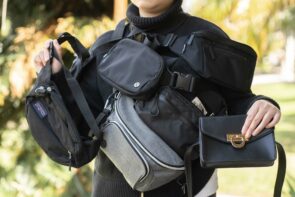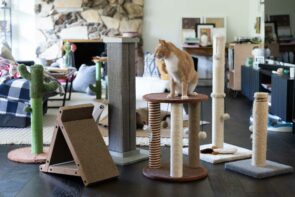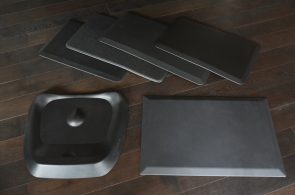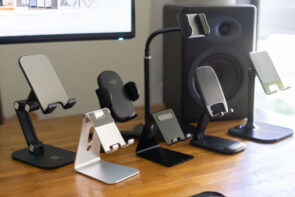
The Best 3D Pen Under $100
Through many hours of extensive research, we corralled user reviews, forum posts, blog articles, video reviews and other best-of lists to determine that the MYNT3D – Professional 3D Printing Pen is the best 3D Pen under $100. We found the MYNT3D operates the most cleanly and precisely. It’s well-built, comes with a simple loading feature and is our only pen with a momentary feed button. Although it takes more effort to load, our runner-up 3Doodler – Create has a sleek anodized aluminum build that puts high quality at your fingertips.
Through many hours of extensive research, we corralled user reviews, forum posts, blog articles, video reviews and other best-of lists to determine that the MYNT3D – Professional 3D Printing Pen is the best 3D Pen under $100. We found the MYNT3D operates the most cleanly and precisely. It’s well-built, comes with a simple loading feature and is our only pen with a momentary feed button. Although it takes more effort to load, our runner-up 3Doodler – Create has a sleek anodized aluminum build that puts high quality at your fingertips.
Table of contents
- Compare the best 3D pens under $100
- 1. The best 3D pen: MYNT3D
- 2. Runner up: 3Doodler – Create
- Other finalists we tested
- How we selected finalists to test
- The history of 3D pens
- How do 3D pens work?
- Who should use a 3D pen?
- Important features to consider
- How we tested
- The bottom line
Compare the best 3D pens under $100
| Product | Cost | Ink Type | Build Quality | User Experience |
|---|---|---|---|---|
| 1. MYNT3D | $$$ | ABS or PLA | 5/5 | 5/5 |
| 2. 3Doodler | $$$$ | ABS or PLA or WOOD | 4/5 | 4/5 |
| 3. Sunveza | $$ | ABS or PLA | 4/5 | 4/5 |
| 4. 7Tech | $$$ | ABS or PLA | 2/5 | 4/5 |
| 5. Sunlu (newer model available) | $$ | PLA | 2/5 | 4/5 |
| 6. Atmosflare (not recommended) | $ | Cool Liquid Ink | 1/5 | 1/5 |
1. The best 3D Pen: MYNT3D – Professional Pen
The MYNT3D – Professional Pen scores highest in nearly all categories and therefore wins the title of the Best 3D Pen under $100. Not only did it feel “more evolved” than the rest, MYNT3D was also the most fun to use. The flow of ink was much more responsive than the rest, which all suffered “leaks” well after disengagement. With Mynt3d, ink dispenses and stops just as you would expect. With the others, overflowing ink disrupted our creative flow and required extra time to manage. If you didn’t move quickly in between segments, about half an inch of filament would extrude on its own, which had to be trimmed before carrying on.
One drawback is MYNT3D comes with only ABS filaments, no PLA. Ours came stocked with ABS in red, yellow and brown. Feed and loading buttons operate the same way as most of the other pens, through a rear loading port. Once inserted, the load button does the rest of the work to feed it through the body of the pen. This method is much simpler than the loading of the 3Doodler, which requires the usage of three additional tools to remove a used tube of filament.
Because each piece of 3Doodler filament comes in a tube only slightly longer than the pen, the user must change the filament more often than the other pens with longer coils of filament. It is slightly larger in size than the 3Doodler but scores slightly higher in comfort.
While temperature readout screens are not crucial for operation, we feel more comfortable knowing the exact temperature of the pen. Having variable temperature controls allows for extrusion of other materials with different melting points. MYNT3D shows its temperature in sharp, bright OLED, controllable to the degree by two “+ -” buttons. Its screen is brighter and sharper than all the other pens we tested.
MYNT3D is the only pen to come default with a momentary feed button. In other words, plastic extrudes only while the user holds down the load button and stops when he or she lets go. This felt more natural than the “on switch” type button, which starts feeding continuously until you press the button again to switch the operation off.
In the Simple Shapes Drawing Tests, MYNT3D scores high in accuracy and ease of use and comparatively clocks in on the faster side, due to a combination of extrusion speed and precision.
We also picked it as our top choice because it came with an unclogging tool that we didn’t have to touch. Overall, our experience with MYNT3D was a head above the rest. It feels solid and looks legitimate, far from a cheap knockoff (though unsurprisingly, you can also find the same design with different branding and colors). The one very minor drawback was that the AC adaptor cable was a little on the short side. The fact that we had to scrape the bottom in order to mention any drawbacks at all just goes to show its design prowess. Besides, this is nothing an extension cord can’t fix.
Key takeaways:
- MYNT3D was the most responsive pen; it stopped the quickest after button release, saving on filament and cleanup time.
- Compact in size and well-designed, MYNT3D was the most comfortable to handle.
- Has a clear OLED temperature readout, adjustable to the degree, to accept a wide variety of filament including both PLA and ABS.
- Low filament blockage, simple operation, and clear documentation make this pen fun and easy to use.
2. Runner up: 3Doodler – Create
The “unrefuted original” 3Doodler – Create is the pen that started it all. Its body and construction is the nicest of the bunch, utilizing anodized aluminum where others opt for plastic. The number one comment about this pen is of its use of proprietary filament. On the one hand, since it is branded under the 3Doodler moniker, the filament looks and feels high quality, especially when stacked up against the others. Their color pigmentation appears brighter and more concentrated, while the others look milky and thin.
On the other hand, this limitation commits the user to buying 3Doodler brand filament exclusively, which users have reported cost at least double the price of cheaper Chinese-made filament. 3Doodler is designed to use straight sticks of filament, so it is not recommended to use bulk 3mm filament, which comes in a spool.
The biggest drawback of the 3Doodler Create was the loading and unloading of filament, which we found clunky and time consuming. It comes with three tools to help unclog the pen. One for removing the extruder tip, one long thin metal rod for pushing stuck filament through and one for unscrewing the panel that exposes the motor. As such, we do not recommend this model for young children without supervision. Once in use, the experience was solid, but having to change the filament was a nuisance. It interrupted our creative flow more than any other 3D pen.
3Doodler fares well in the Simple Shapes Drawing test and Build Quality but loses out because of its inefficient loading and unloading process. Furthermore, 3Doodler filament is much shorter than the others, requiring more frequent refilling.
Despite these issues and higher cost (about $30 more than Mynt3D), 3Doodler Create offers an overall experience that feels higher in quality. Its documentation and website are by far the most user-friendly, while some other brands (like Sunlu) barely come with any instructions. Though the biggest reviewer complaints was the price of pen and filament, the old adage, “you get what you pay for,” certainly applies. For more serious hobbyists with deeper pockets, 3Doodler is a strong contender.
Key takeaways:
- 3Doodler – Create’s anodized aluminum body stands out with the nicest construction of the bunch.
- This pen has by far the most user-friendly documentation and instructions available from the manufacturer.
- High quality filament and drawing experience, but users are forced to use proprietary 3Doodler filament.
Other finalists we tested
7Tech’s 3D Printing Pen was has one of the most ubiquitous designs of all the pens available on Amazon. Sold under countless other brands, it became clear to us why its design is so persistent. It operates reasonably well, with low blockage rates, though we found its shape difficult to wield. It’s top-heavy on its own, but the loaded filament dangling at the top only makes matters worse.
The large pen often feels out of balance and thus challenging to control precisely. The stepless speed control suffers from awkward placement and often registered unintentionally. The buttons and build feel overall light and cheap, especially for the price tag of around $54.50. The digital display screen, like everything else, looked low-budget. But with all of its design woes, we can’t deny that it actually functioned really well. Not only that, it was one of the fastest pens, good for those looking for speed. However, like all the other pens besides Mynt3d, the filament overflowed after the load button disengaged, making for an extra messy workspace.
This model of 3D pen was also one of those designs that had multiple brandings under different names and colors. This particular brand did an impressive job of going “upscale” in its packaging, but it fell short in execution. The all-white box harkens back to Apple’s branding style, which all too often companies borrow in attempt to bump up in price bracket. This model comes with a matching pen stand in matching rubberized black.
Though attractive, it didn’t work for us at all. Anchored not by weight but by suction cup, the stand fell over many times during use, proving to be more of a danger than a help. The rest of our experience echoes this disappointment: it looks good but disappoints in quality. It may look like it’s worth the cost of $70, but it performs more closely to the 7tech at the $50 price point. Overall, it is a useable pen with a low blockage rate, but it just doesn’t live up to the high-end look of its packaging.
Another model of 3D pen that we’ve seen with different branding, Sunlu is not only the cheapest in price, but also of design and construction. Off the bat, its biggest drawback is that it only uses PLA plastic. However, because of its price, Sunlu could be a worthy contender for the younger set, costing about $30 (a quarter of the price of the 3Doodler). Its PLA-only limitation conveniently falls in line with our earlier recommendation that children use PLA over more toxic ABS thermoplastic.
However, we don’t recommend Sunlu for those who plan to log in serious hours 3D doodling. Button placement is frustrating, with both the load and unload buttons much too close to each other. We hit the wrong button too many times, causing slips and mess ups. Not only that, it is also the only pen out of the bunch without a speed control. One unique feature is that the loading button can be switched to either continuous or momentary mode.
Unfortunately, we had trouble switching modes and there was no indication of which mode was engaged. Overall, the Sunlu gave us the most frustrating experience, reflected in its low performance grades. Its low price point turned out to be its best feature, though it may come at the cost of your sanity!
We had high hopes for Atmosflare 3D Drawing Pen, but its difficulty to use hampered its advantages. It was the only pen in our group that uses UV LED light instead of heat to cure the ink, which Atmosflare claims is safer to use than high-heat thermoplastic pens. Unlike the other pens, it does not need to be plugged in. Instead, the Atmosflare requires one A-battery which powers the LED UV spotlight at the tip of the pen, rated to last four hours. There are no other mechanical parts; you use your hands to squeeze the ink out of the cartridge, not unlike puffy paint.
Because cool UV ink works differently than thermoplastic filament, we unexpectedly faced delays in our testing. Its instructions were overly simplistic and failed to state that a plastic working surface was necessary for tracing stencils. The ink absorbed into paper and cardboard and therefore didn’t fully cure. We found that not only did the surface have to be plastic, but transparent as well. It was necessary to cure the underside as well as the top, and a transparent surface allows you to shine the UV light through the bottom. Finally experimenting with a clear plastic bag, we succeeded in creating an object.
The lack of instructions proved to be ever more frustrating. We fumbled around until we found Youtube videos produced by Atmosflare that explained its specific rules of operation. All of the 3D pens have quirks of their own, but we found that the Atmosflare was the most fussy and time-consuming to operate. It took a great deal of patience and endurance of the hand to get even lines.
The pen itself suffered from design flaws that caused the cartridge to pop out repeatedly during use. If we were not careful to shut off the spotlight before starting a line, it was very prone to clogging. When successful, we were still left with a sticky mess that didn’t seem to ever cure completely. In the end, we are hesitant to recommend this pen. As mentioned before, we didn’t believe that it was necessarily safer for children than thermoplastic pens, as we were unable to find any concrete proof of the safety of UV light exposure.
How we selected finalists to test
With plenty of coffee and sheer determination, we spent a week of online research to find the most meaningful bits of information on 3D pens. We sifted through everything we could find to help us design testing methods and criteria, including other review sites, Reddit and instructional YouTube videos.
Faced with a staggering number of brands, we certainly had our work cut out for us. How do they differ from one another? Are some of them the same but with different branding? Unable to test each and every one (some models are already out of production), it was near impossible to know. Instead, we relied on natural selection and focused on the best-selling and best-rated models on Amazon. We also selected other standout pens with unique features and different technologies to achieve a more diverse cross-section.
Without further ado, we present our top picks for the Best 3D Pens under $100.
The history of 3D pens
The first 3D pens were invented by Maxwell Bogue and Peter Dilworth of 3Doodler. The inspiration came from a moment of exasperation when a 14-hour 3D print job missed a line. If only they could remove the extruder and fill it in by hand, they thought. This was their “Eureka!” moment and the first prototypes soon followed that same year in 2012.
However, it was not the first time this idea came up. In 1995, a company called Stratasys filed a patent for an “apparatus and method for creating three-dimensional objects.” This conception goes on to describe a machine controlled by computers, akin to the 3D printer we know today.
Interestingly, the patent references an earlier handheld device called the Matt Wax Gun, used to create wax models for jewelry. The Matt Wax Gun looks like a glue gun, but uses wax instead of glue and functions very much like a 3D pen. The date of invention is unknown to us, but books on wax modeling date as early as 1982. An industry-changing innovation in its own right, it enabled designers to create airy and spontaneous shapes as they were able to plot lines in the air.
Though similar in many ways, 3D pens differ in their use of thermoplastics instead of wax. The pen format leads to a more natural drawing position than the gun shape. Plastics allow for more rigid and permanent setting, pliable and sometimes flexible depending on the material. Along with more common plastics like ABS and PLA, some pens offer compatibility with hybrids mixed with wood, metal or TPU, which is a flexible thermal polyurethane. At the core, the basic technology is the same: a heating element brings the material to melting point before a motor (or manual function) extrudes it from the tip where it dries almost instantaneously.
3Doodler’s initial Kickstarter campaign thrust the idea of 3D pens to popularity, raising over one million dollars on its $30,000 goal. Many companies took notice of the demand and followed suit, flooding the market with a myriad of options.
How do 3D pens work?
There are two different types of 3D pen types: thermoplastic and cool UV ink. Both types depend on the technology of material shifting from liquid to solid at just the right moment. These simple technologies allow for the writer to “lift off” from the flat medium of paper into three dimensional space.
Thermoplastic 3D pens
In the more ubiquitous thermoplastic pen type, plastic filament feeds into the pen where it’s heated to its melting point, then it extrudes from the tip and dries again as a solid line. This enables the user to “draw in the air,” so long as the line has enough structural support. The real magic lies in the materials used as ink: thermoplastic.
When English scientist Alexander Parkes discovered thermoplastic in 1862, no one could have imagined we would one day use this material as ink! Today, thermoplastic is widely available in many types and colors, typically in reels of 1.75mm, and ready to dispense in 3D pens and printers.

Types of thermoplastic
ABS: Acrylonitrile Butadiene Styrene is a thermoplastic polymer. Legos are made of ABS. They appear more matte in appearance, and set slightly quicker than PLA.
PLA: Polylactic Acid is a thermoplastic aliphatic polyester typically made from cornstarch, tapioca roots, chips or sugar cane. This material feels more brittle than ABS and has a glossy finish.
Other: 3Doodler Pro series offers a variety of proprietary materials, including metal and wood polycarbonate mixes. Their Flexy material is bendable unlike ABS and PLA.
Safety of thermoplastic
One of the first things we noticed while using 3D pens is the unpleasant odor. To our dismay, we found that plastic extrusion releases toxic VOCs (Volatile Organic Carbon) so users should work in well-ventilated areas and exercise extra caution with children. Despite some claims, organically derived PLA also gives off VOCs, though studies show that ABS is significantly more toxic.
Dr. Fabrizio Merlo and Dr. Eng. Stefano Mazzoni found ammonia, cyanidric acid, phenol and benzene among the harmful gasses emitted via plastic fusion and heating. Another potential danger are harmful nanoparticle emissions, which can be absorbed by breathing or through the skin. Their study finds that ABS emits three to 30 times more nanoparticles than PLA.
They also note that it takes 10 to 30 minutes after extrusion process ends to clear back to standard levels. To complicate matters, toxic emission levels vary wildly between different versions of the same types of plastic. As both 3D printing and 3D pens are relatively new to consumers, we expect there to be more regulation as more information becomes available.
Is thermoplastic safe for children?
This may seem alarming, but remember that many art materials, such as paints, glues and epoxies, come with toxicity warnings. Therefore, it’s important to use 3D pens in a well-ventilated area and to take breaks in the same manner. Though not completely non-toxic, we recommend that children use PLA filament to minimize the risk of VOCs. As the tips are heated to upwards of 400 degrees, we also recommend adult supervision to guard against burns.
Though very much geared towards kids, we have to wonder about safety and regulation of these technologies. None of the pens insisted on appropriate age groups, as you would see on most retail toys, which gives us pause.
Cool UV ink
The less popular alternative to thermoplastic ink is the “cool ink” variant, as found in the Atmosflare 3D Drawing Pen. Unlike rigid plastic filament, this ink starts out in liquid form. UV light then cures the ink to a solid state as it’s drawn out from the tip. This is possible thanks to light-sensitive photopolymers in the ink. The big advantage to this is that there is no heating element necessary, barring the danger of burns altogether.
Is UV ink safe for children?
UV ink itself appears to be safe enough to handle, however, we could not find any definitive statements on the safety of exposure to UV light. We reached out to some makers of UV-curing 3D pens, but did not receive any replies. We have seen arguments on both sides on Reddit’s /r/3Dprinting subreddit, which is enough to shake our confidence.
Even as what some claim to be weak, consumer-grade LED light, we feel reluctant to trust that the same technology used to cure gel manicures and dental procedures is safe without any protection. Moreover, it’s baffling that these pens instruct to “avoid looking directly at the spotlight” when it seems impossible not to stare at its reflections for long stretches during operation.
Whether it be UV light or plastic fumes, we strongly recommend extra caution of these potential dangers with either type of 3D pen. These technologies may still be too new for proper documentation to address these concerns. Again, always work in a well-ventilated area and take plenty of breaks.
Who should use a 3D pen?
Anyone with a creative inkling should try 3D pens. You might not create the next Mona Lisa (in 3D), but you might delight in its novelty. It’s remarkable — you can draw in the air, just not in the same magical way we envisioned. For those who are more the “paint by numbers” type, many traceable templates are available online. 3D pens certainly have a learning curve, like any new tool, so patience is key. Many reviewers report frustration with the curve, but just as many expressed the joy and reward of spending the time to learn a new skill.
Like adult coloring books or other toys geared towards adults and children, 3D pens certainly have that sort of pull towards adults who are young at heart — the ones who held onto a measure of whimsy leftover from childhood. Be sure to check out photos of completed projects to acclimate yourself to the look of hand drawn 3D objects. In contrast to very cleanly printed objects by 3D printers, 3D pens have a very squiggly, handheld appearance, not too far from puffy paint.
For the serious and skeptical set, 3D pens may have some practical usages, such as fixing 3D print errors or welding broken plastic parts. We noticed some seasoned 3D printer users noting their usefulness on Reddit. Jamie and Adam of Tested.com demonstrate the 3D pen as a companion to a 3D printer, welding printed pieces together into one.
Important features to consider
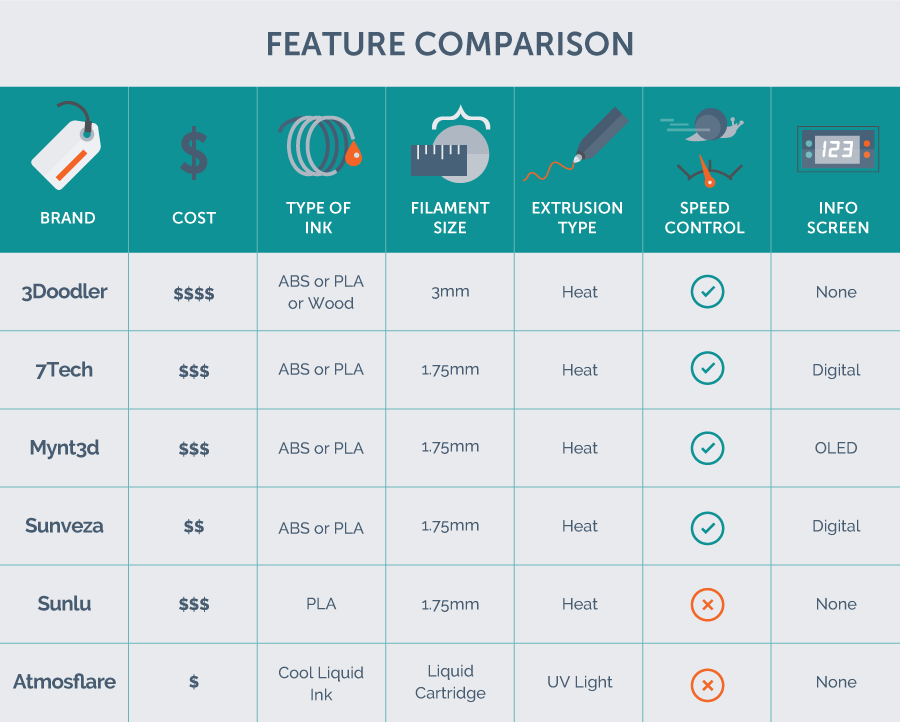
Speed adjustment: The ability to change the speed of extrusion makes for a more tailored experience. Some users simply want to draw faster, while others prefer to draw slower. Having no control means you will have to adjust to the pen’s default speed. However, having a speed adjustment control does not necessarily mean that its range will be to your liking.
Material compatibility (temperature adjustment): 3D pens with variable temperatures allow for usage of different types of filament. For instance, PLA melts at a much lower temperature than ABS.
Comfort/Design: Because steadiness greatly influences the quality of your creations, a well-designed 3D pen makes all the difference. 3D pens that feel closer to pens and pencils unsurprisingly feel more natural to use. The process of loading and unloading filaments falls under this category as well. Speed and workflow affect overall enjoyability and ease of use.
Included plastic filament: Having more colors and types to try out of the box makes for a more experimental and fun time. Pay attention to the size and type of filaments compatible with your model. Proprietary filament sizes can cost more than standardized sizes. Having more buying options can bring savings in the long run, but users report that the quality of cheaply available filaments are unpredictable.
How well it works: The only way to know this while you shop is to rely on user reviews. Keep an eye out for overwhelming reports of clogging or breakage.
How we tested

Simple shape tracing tests

One way to use 3D pens is to trace outlines on paper to create different planes of an object. The plastic dries in a few moments and the plastic breaks away cleanly from the paper. Owing to this method, we created Simple Shape Tracing Tests to measure accuracy and ease of use. We scored the following:
- Straight Line Test
- Triangle Test
- Spiral Test
We timed each set in order to demonstrate the fastest speed setting of each 3D pen.
Free draw test: Calder elephant and Picasso camel
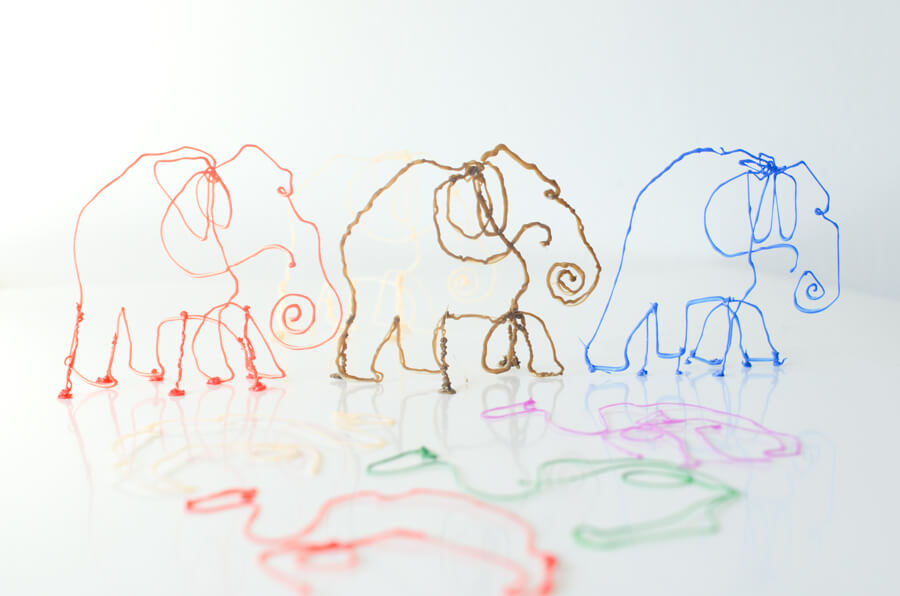
With spontaneity in mind, we rated the experience of free-hand drawing (without tracing) an Alexander Calder elephant and Pablo Picasso camel. In this test, extrusion speed stands out as a factor. Faster pens force the user to move and think faster, which may be positive or negative depending on preference. We scored each pen for ease, accuracy and enjoyment.
Stencil draw test: 3D eyeglasses

This test combines two essential skills of 3D drawing: Tracing stencils and welding. These techniques comprise the method used to create three dimensional objects. First, create the flat components, then join them together, like walls of a gingerbread house. There are free libraries of stencils to use online developed by manufacturers and enterprising enthusiasts.
Print them out on regular paper and you’ll have the blueprints to anything from the Eiffel Tower to Christmas ornaments. Chosen for simplicity and combination of rounded and sharp corners, the Eyeglasses stencil consists of three sides joined together at the hinge. Again we graded each pen for ease, accuracy and enjoyment.
User experience grades
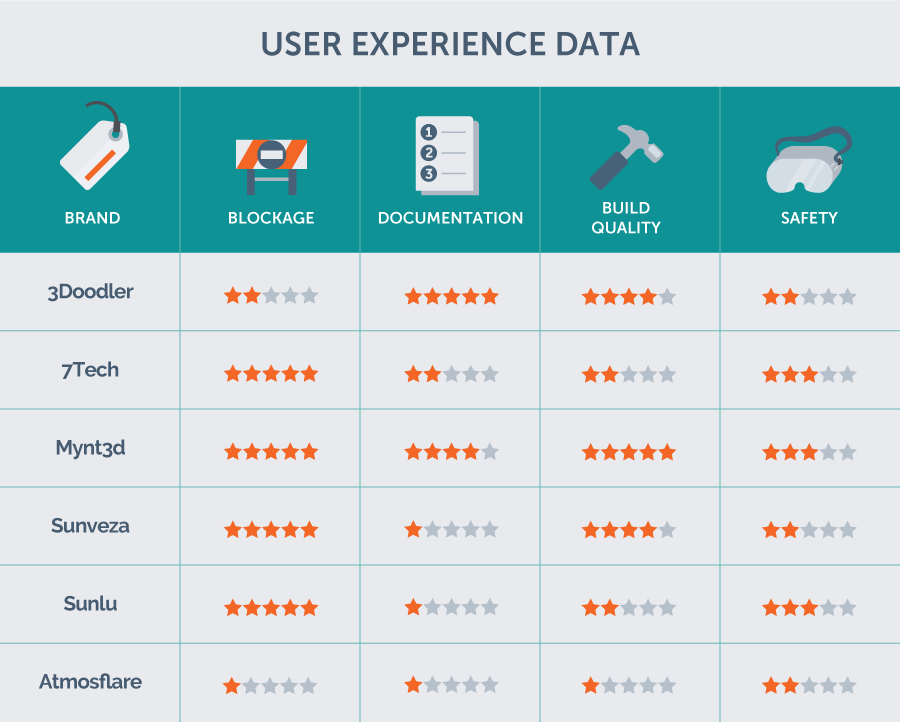
Filament blockage: Pens prone to filament blockage scored low in this category. Blockages interrupt our creative train-of-thought, which is no fun!
Directions/Documentation: Having a clear set of instructions is crucial. Some pens offer supportive, user-friendly manuals that elevated our experience, while others left us scratching our heads.
Build and material quality grade: The feeling of handling each pen really makes a difference. Is it cheap and light? Do the buttons work? Better materials and construction make for a better product.
Safety: 3D pens reach high temperatures to melt plastics known to emit VOCs. We grade each pen on safety and take note of any apparent dangers.
The bottom line
Stacked up against the rest, we knew very quickly that MYNT3D would be our pick for the best 3D pen under $100. Comfortable and easy to use, it facilitated a more free and fun experience. The well-designed MYNT3D Printing Pen operates the most cleanly and precisely to bring your three-dimensional creations to life.
At the price of around $70, it outperforms the more popular and more expensive 3Doodler Create, which is our runner-up pick that retails for about $30 more. With its own strengths, more serious hobbyists may forgive 3Doodler Create’s design quirks for higher-quality materials and build, along with an extended range of filament materials.
Until recently, only factories mass produced molded plastic parts with no chance of personal customization. Now, 3D printers pass on plastic fabrication to the consumer. Arming creative types with tools to forge in this medium is a uniquely new opportunity sure to usher in a new era. Perhaps 3D pens are precursors to even more powerful handheld 3D tools, but for now, they perfectly satisfy our inner child as creative toys.
More Reviews
Igloo - Playmate 30 Can
The 10 Best Curling Irons for Thick Hair
BIO IONIC - Long Barrel Curling Iron 1.25' NanoIonic MX
The 8 Best Dog Shedding Brushes
Hertzko Self-Cleaning Brush
The 11 Best Fanny Packs & Belt Bags
Wandrd - Toiletry Bag in Medium
SmartCat - Ultimate Scratching Post
The 7 Best Mops For Laminate Floors
O-Cedar ProMist MAX
The 9 Best Mops For Hardwood Floors
Rubbermaid - Reveal Spray Mop


